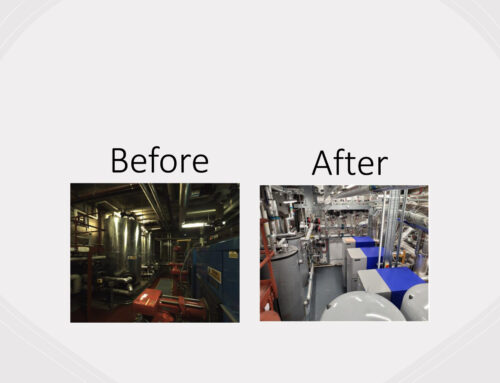Skip to content
HEAT PUMPS AND ELECTRIC VEHICLES
With the roll out of Heat Pumps and Electric Vehicles to assist with NZEB Compliance and our 2020/2050 carbon reduction targets, Homan O’Brien organised a meeting with ESB Networks, ESB eHeat and ESB Innovation to discuss the effect of new technologies on the grid and to discuss how we should treat them from a design perspective on our MV/LV Design systems.
IRELAND’S LOW CARBON FUTURE
Irish and International energy experts are today exploring how Ireland can reduce its carbon emissions over the next decade exploring different technology options and approaches for achieving lower emissions in Ireland across electricity, transport and heat.
A new report, Ireland’s Low Carbon Future – Dimensions of a Solution, identifies heat pumps and electric vehicles as delivering the most immediate and long-term solution to Ireland’s carbon challenge.
Solutions that use AI and smart algorithms to control and optimise when flexible assets use energy connects a customer’s flexible assets to a retailer’s energy trading team, and optimises the customer’s consumption based on predicted pool prices are already in use internationally, just not here yet.
Most customers have flexibility in their electricity consumption so we can identify and unlock flexible assets. These assets will be optimised by automatically shifting load from expensive half hourly periods to cheaper periods within the agreed safe working parameters of the asset.
This optimisation ensures lowest price & lowest carbon emissions; bringing together energy market forecasts and customer consumption predictions to make sure the right asset is doing the right thing at the right time.
Pat O’Doherty, Chief Executive of ESB, has said: “Ireland has committed to reducing its Greenhouse Gas Emission by at least 80 per cent by 2050. Our current emissions arise from how we heat our homes and businesses, how we transport ourselves and our goods around the country and how we generate our electricity”.
“The future, as set out in our report Ireland’s Low Carbon Future – Dimensions of a Solution, will include a decarbonised electricity system providing the energy for the heat and transport sectors which will enable very different customer engagement through new technologies. Doing this successfully will address up to 60 per cent of Ireland’s total emissions providing a brighter future for the communities and people we serve. ESB intends to lead that transition.”
Minister for Communications, Climate Action and the Environment Denis Naughten has stated: “- to place the customer at the heart of Ireland’s low carbon energy future. I welcome the fact that it states an uptake in existing technologies such as heat pumps and electric vehicles will make significant inroads in this transition.”
“Energy consumers, as well as governments and energy providers, all have a stake in this transition towards a low carbon future, and by bringing them together we hope to shape the conversation leading to effective policy solutions.”
Key findings of Ireland’s Low Carbon Future -Dimensions of a Solution report:
-
Ireland has committed to reducing by at least 80 per cent its Greenhouse gas emissions from the energy sector by 2050. This means a reduction from 38Mt of greenhouse gases in 2016 to less than 6Mt in 2050.
-
This will require profound change in the electricity, heat and transport sectors and cannot be achieved by ‘perfecting’ the current high carbon system.
-
The fundamental premise to the report is that a decarbonised electricity system powering the heat and transport sectors will address the majority of Ireland’s energy emissions and enable Ireland to reduce by around 60 per cent its total emissions.
-
The electricity sector has halved the content of carbon in each unit of electricity since 1990 and is on target to have 40 per cent of its electricity from renewables by 2020, creating the platform for further renewable penetration over the course of the following decade.
Heat pumps and electric vehicles will deliver immediate and longer-term solutions to Ireland’s carbon reduction challenge
-
By 2050, it is envisaged that that 60 per cent of households will have a heat pump and that Electric Vehicles will account for 60 per cent of new car sales by 2030.
-
Intelligent energy use through battery storage, demand side response in addition to embedded generation and district heating can all contribute to a more stable, efficient and sustainable energy system.
-
It is anticipated that a combination of wind, solar, biomass and carbon capture and storage will be required for Ireland’s future electricity demands.
On foot of the above developments Homan O’Brien met with Key ESB staff to discuss the implications of large scale Heat Pump Technology and Electric Vehicles on the Grid and how we will work together.
Each technology presents challenges on the ESB networks and to the MV/LV infrastructure designer from Harmonic’s as a result of VSD’s on Heat Pumps to Metering and Aggregation for EV’s.
Talk to Homan O’Brien about a solution for your project.
Gerard Keating, CEng FCIBSE FIHEEM FCons EI MIEI Chartered Engineer
Director
Homan O’Brien
Share This Story, Choose Your Platform!


